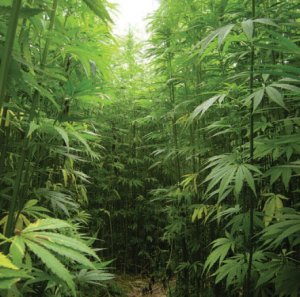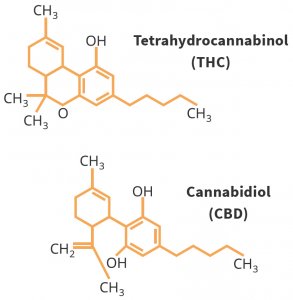What is Hemp?
Hemp is a variety of the cannabis plant, grown for its industrial uses, and legally defined as containing less than 0.3% THC.
Is Hemp Legal?
In December of 2018, President Trump signed the 2018 Farm Bill, legalizing industrial hemp on the federal level. The bill allows for broad hemp cultivation, and removes restrictions on the sale, transport, or possession of hemp-derived products, including their transport across state lines. All grow operations must be licensed, and the crop cannot contain more than 0.3% THC. In 2018, Utah also passed two bills paving the way for hemp-derived CBD and industrial hemp cultivation: SB130 and HB302. These bills are designed to regulate the current CBD market and to implement legislative infrastructure for the cultivation, processing, and distribution of CBD in and around the state.
What is Hemp Used For?
Cultivated for over ten millenia, hemp has been used for a wider array of industry than any other plant. From the fibers, which are used to make rope, textiles, clothing, shoes, food, paper, bioplastics, insulation, and biofuel, to the seeds, whose oils can be used for paints, moisturizers, cooking, and plastics, the hemp plant is astonishingly versatile. In addition to its many material uses, hemp is also highly nutritious, with the seeds providing fiber, B vitamins, and dietary minerals. Hemp also contains over 100 types of cannabinoids, and has a history of medicinal use going back over 6,000 years.
What is the Difference Between Hemp and Marijuana?
Hemp and marijuana come from the same species of plant, Cannabis sativa. However, the two have been selectively bred for very different uses. In the same way that humans selectively bred dogs into mastiffs and pomeranians for two very different purposes and with different traits, the same has been done to the cannabis plant. Hemp and marijuana are the same species, but have very different chemical components and uses today.

Hemp:
- CBD: ~15%
- THC: .3% or less
- Tall, skinny appearance with thicker stalks
- Average Height: 5-10 ft

Marijuana:
- CBD: ~10%
- THC: 5-20%
- Wide, bushy appearance with delicate stalks
- Average Height: 2-4 feet
What are Cannabinoids?
Cannabinoids are a class of chemical compounds found naturally in animals and some plants. When found in animals, these chemical compounds are called endocannabinoids. Like all animals, humans have an entire endocannabinoid system, with our body making cannabinoid neurotransmitters, receptors, and enzymes to process them. This system regulates many important functions, including memory, appetite, energy balance, metabolism, stress response, immune function, reproduction, pain, thermoregulation, and sleep.
When found in plants, these chemical compounds are called phytocannabinoids. The cannabis plant (along with a few other choice plants, like chocolate and Echinacea) produces cannabinoids that mimic the molecules found in our own bodies. Since we already have receptors for these chemical compounds, the animal body can take advantage of cannabinoids from plants in the same way we use the cannabinoids we make with our own bodies.

What’s the difference between CBD and THC?

CBD and THC are both phytocannabinoids (cannabinoids derived from plants). The two compounds are made up of the exact same atoms. The difference occurs in the way those atoms are put together—their molecular structure. Molecular structure works like a puzzle piece, allowing THC to bind with the CB1 receptor—a site that CBD cannot bind to due to its different molecular structure. In fact, CBD has actually been shown to negate the bond between receptors and THC molecules, helping to neutralize the psychoactive effects of THC. Hemp, by definition, can never have more than 0.3% THC, which means it cannot bind to CB1 or generate a psychoactive effect.
What organisms have naturally occurring cannabinoids?
- Humans and all other mammals
- Birds
- Reptiles
- Fish
- Cannabis (hemp and marijuana)
- Chocolate
- Black Truffle
- Echinacea
- Liverwort
- Helichrysum
- Tea shrub
Historical hemp uses
- Textiles
- Clothing
- Blankets
- Sails (the word “canvas” derives from “cannabis”)
- Flags and Pennants
- Cordage
- Battleship Rigging
- Rope
- Shoes
- Food
- Insulation
- Animal feed and bedding
- Paper
- Maps
- Ship Logs
- Bibles
- Legal tender:
- For 200 years in Colonial America
- Fuel:
- Henry Ford first made hemp fuel in 1896
